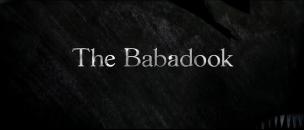AustLit
Latest Issues
AbstractHistoryArchive Description
Publication Details of Only Known VersionEarliest 2 Known Versions of
Works about this Work
-
The Isolation at the Heart of Australian Horror
2020
single work
column
— Appears in: Kill Your Darlings [Online] , November 2020;'Australian horror films have always had a unique fascination with the continent’s landscape. Though the genre has evolved from the Ozploitation era into more complex territory, it remains moulded by the terra nullius myth and a colonial sense of disconnection from the land. '
-
Abject Relations : Postmaternal Australia in The Babadook
2019
single work
criticism
— Appears in: Hecate , vol. 45 no. 1/2 2019; (p. 23-42, 311.)'This article contextualises Jennifer Kent's 2014 film The Babadook (2014) within postmaternal Australia. Theorised by Julie Stephens, the postmaternal refers to a paradigm characterised by the disqualification of maternal forms of care as indices of citizenship. Stephens argues that the postmaternal has underpinned significant personal suffering in the lives of women in the thirty years since its ascendancy to ideological predominance. Kent represents the distress of her maternal protagonist, Amelia, according to the conventions of horror and the Gothic, as she mothers in a situation of extraordinary personal trauma. This paper focuses, however, upon the political dimension of Kent's representation of the maternal, and applies D. W. Winnicott's object relations theory to Julia Kristeva's theory of abjection to articulate the interplay of psychic and structural factors underpinning Kent's representation of the mother. A central contention is, accordingly, that Kent depicts a maternality subject not solely to personal trauma, but also to a societal abjection of the maternal and related forms of care upholding postmaternal capitalism. This is an abjection that Amelia depressively internalises, turning from mother to monster. Also considered is the signifying potential of haunting and monstrosity, where maternal concerns are repressed and abjected from the public sphere. Demonstrated are the political underpinnings of the maternal Gothic, and the possibility of redemption through the embrace of human interdependence.' (Publication abstract)
-
Monstrous Motherhood : Summoning the Abject in 'The Babadook'
2019
single work
criticism
— Appears in: Screen Education , no. 92 2019; ' -
Homespun Horror : The Making Of The Babadook
2019
single work
column
— Appears in: FilmInk , 22 May 2019; -
Babashook : The Babadook, Gay Iconography and Internet Cultures
2019
single work
criticism
— Appears in: The Australasian Journal of Popular Culture , vol. 8 no. 1 2019; (p. 7-26)'Upon its 2014 release, Australian film The Babadook (Kent, 2014), gained critical acclaim worldwide. While the film gathered high praise, its domestic release was impeded by a lack of marketing support and ongoing debate about the quality of Australian horror films. By 2015, The Babadook was available to stream on Netflix in the United States, and one would imagine, to gradually fade from view. Yet a seemingly innocent categorization error on Netflix in 2016, which listed The Babadook as an LGBT interest film, resulted in a revival of the film’s popularity as a cult film and the emergence of the Babadook as ‘a frightening, fabulous new gay icon’. This article will trace the production history of The Babadook from its theatrical release through to its Netflix premiere and the evolution of the Babadook as a gay icon. Using Jenkins et al.’s work on spreadable media, the influence and spread of Internet content will be highlighted against the backdrop of contemporary political movements. In turn I will propose a number of categories essential to gay iconography, and explore how Internet cultures continually refine and expand these categories for widespread dissemination. The case study of the Babadook’s representation at American Pride Month in June 2017 will be used to illustrate the ability of Internet cultures to appropriate popular culture for political impact in marginalized communities.' (Publication abstract)
-
Shivers Down The Spine
2014
single work
review
— Appears in: The Courier-Mail , 17 May 2014; (p. 16)
— Review of The Babadook 2013 single work film/TV '...Kent's directorial debut The Baba-dook, a psychological thriller starring Essie Davis, achieved five-star reviews and created such a buzz at this years Sundance Film Festival that she has been wooed by Hollywood's leading agents...' -
New Life in Horror Genre
2014
single work
review
— Appears in: The Weekend Australian , 24-25 May 2014; (p. 14-15)
— Review of The Babadook 2013 single work film/TV -
The Best of Australian Arts 2014 : Film
2014
single work
review
— Appears in: The Monthly , October no. 105 2014; (p. 64-65)
— Review of The Babadook 2013 single work film/TV -
The Babadook Review – A Superbly Acted, Chilling Freudian Thriller
2014
single work
review
— Appears in: The Guardian , 24 October 2014;
— Review of The Babadook 2013 single work film/TV -
Monstrous Motherhood
2014
single work
— Appears in: Overland [Online] , October 2014;
— Review of The Babadook 2013 single work film/TV -
Australia Rides Creative High
2014
single work
column
— Appears in: The Age , 23 January 2014; (p. 30) -
Thrills, Action at Film Fest
2014
single work
column
— Appears in: The Sunday Mail , 6 April 2014; (p. 18-19) -
Chilling Finale for Film Feast
2014
single work
column
— Appears in: The Sunday Mail , 13 April 2014; (p. 39) -
Horror-Struck Supporters Stepped In
2014
single work
column
— Appears in: The Advertiser , 10 May 2014; (p. 9) -
Motherly Love a Horror
2014
single work
column
— Appears in: The Sunday Mail , 18 May vol. 18 May no. 2014; (p. 81)
Awards
- 2015 winner New South Wales Premier's Literary Awards — Betty Roland Prize for Scriptwriting
- 2014 winner Film Critics Circle of Australia — Best Original Screenplay
- 2014 nominated Film Critics Circle of Australia — Best Film
- 2014 winner Australian Academy of Cinema and Television Arts Awards — Best Original Screenplay
- 2014 joint winner Australian Academy of Cinema and Television Arts Awards — Best Film





